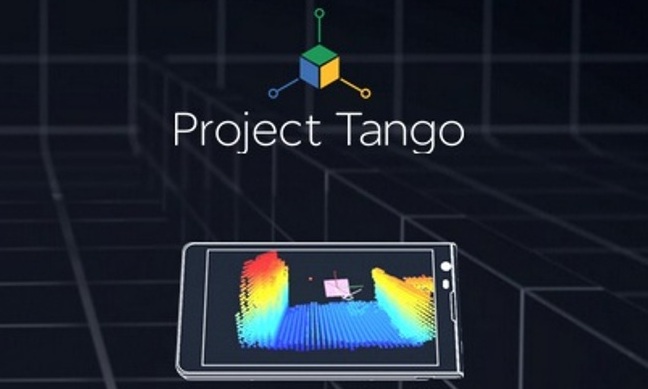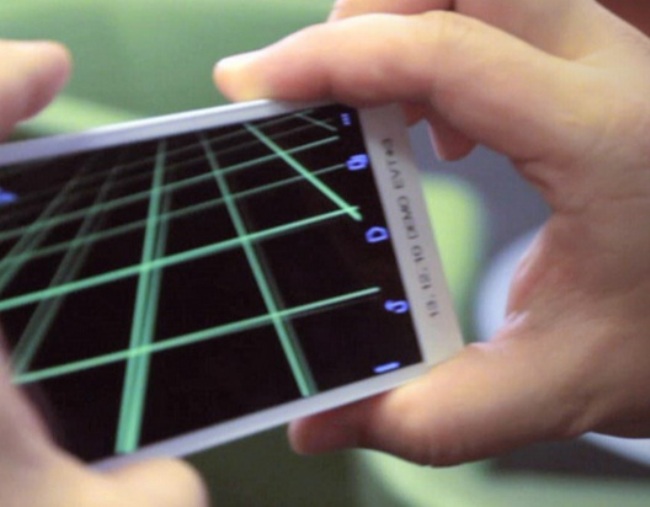Project Tango: Another Privacy Invasion Attempt from Google?
After creating maps and satellite views of the Earth, producing ”street views” even underwater, and mapping out the skies, it seems Google is now planning to lay its eyes on the interiors of homes and buildings — and have everything mapped. How do they intend to do this? Through one of the latest Google babies: Project Tango.
What is Project Tango?
Project Tango is a Google initiative aimed at producing a mobile device that has a sense of space and movement comparable to that of humans’. The project is being undertaken in collaboration with a number of universities, research laboratories, and industrial partners across 9 countries. It is centered on integrating robotics and computer vision in a mobile phone.
Project Tango Prototype
Currently, Project Tango takes the form of a 5-inch Android smartphone that features customized hardware and software designed for full 3D motion tracking. It aims to create a 3D map of the environment as perceived by the device’s special combination of hardware and software. The device comes with sensors that enable it to over 250,000 3D measurements per second, including the real-time sensing of the device’s position and orientation.
The prototype carries the following cameras:
-
1 standard 4 MP color rear camera
-
1 depth camera that shoots at 320×180 @ 5Hz
-
1 fish eye camera or 180° wide angle camera
-
1 front camera with a 120° field of view
These cameras work together to create 3D maps of in-building areas. Interestingly, along with these cameras is another sensor that enables the possibility for an “infrared capture effect” or night vision. There are no clear details on this yet. However, it indeed sounds very promising. Standard night vision cameras that track IR signatures are typically thick and bulky. To incorporate night vision in a smartphone’s body would require a night vision technology similar to what University of Florida scientists introduced in 2010.
There are many other features of the Project Tango prototype smartphone but they are not yet officially detailed. Possibly, the best details we can get about them are in this rather short YouTube video of Project Tango 3D scan shared by some developers who’ve had the opportunity to try one of the prototypes released by Google.
What is it for?
If the Google Street View car was deployed to capture images of the outdoors, Project Tango is believed to be aimed at empowering everyone to capture images, in 3D, of places that are beyond the reach of satellite cameras and Street View. If individual users of the Internet become capable of mapping out the spaces the visit, Google will of course welcome the opportunity of collecting the new useful data produced and sharing these data with everyone.
Of course, this is not the official reason Google would like to headline Project Tango with. The company certainly does not want to announce that they want to intrude into private places beyond Street View and the satellite images. On the official Project Tango website, the capabilities highlighted by Google are centered on the benefits users can get. These capabilities include the generation of 3D environments that can be used in games or simulations, and the opportunity to develop something that can help visually-impaired people in navigating places on their own.
Where is it available?
Similar to the Google Glass project in its earlier stages, only prototypes have been released to developers at the moment. The project is still in a development, testing, and evaluation phase. There is still no final product is available. Developers interested in Project Tango can contact Google to try obtaining and testing a prototype device.
Should you be concerned or wary?
Just like Google Glass and other similar wearable tech devices, many will likely feel uneasy about a smartphone designed to map out the places that have not been covered by Google’s Street View or satellite images. Street View was controversial enough to some extent. Google Glass is frowned upon by many for the possibly-ubiquitous privacy intrusion it can facilitate. A smartphone that aims to obtain clearer 3D images or maps of building interiors is expectedly something many would consider alarming.
Still, despite the privacy fears, it’s good to see technological advancements like Project Tango making some headway. Until an actual product gets outed and until the privacy or security risks and threats are actually encountered, there should be no reason to try suppressing a tech initiative like Project Tango. Privacy is a legitimate concern but there are always compromises that can be done not to subdue promising tech ideas like Project Tango.


